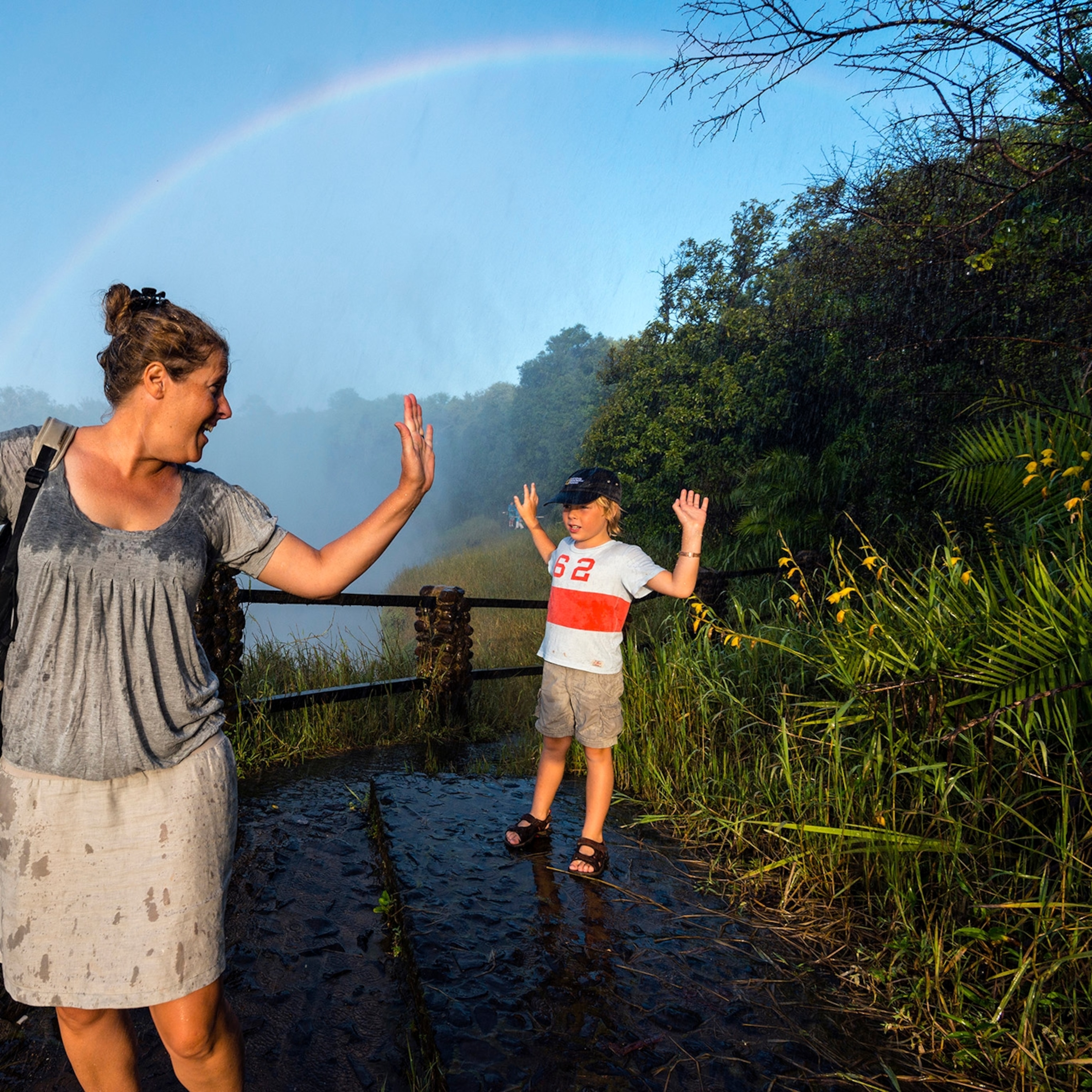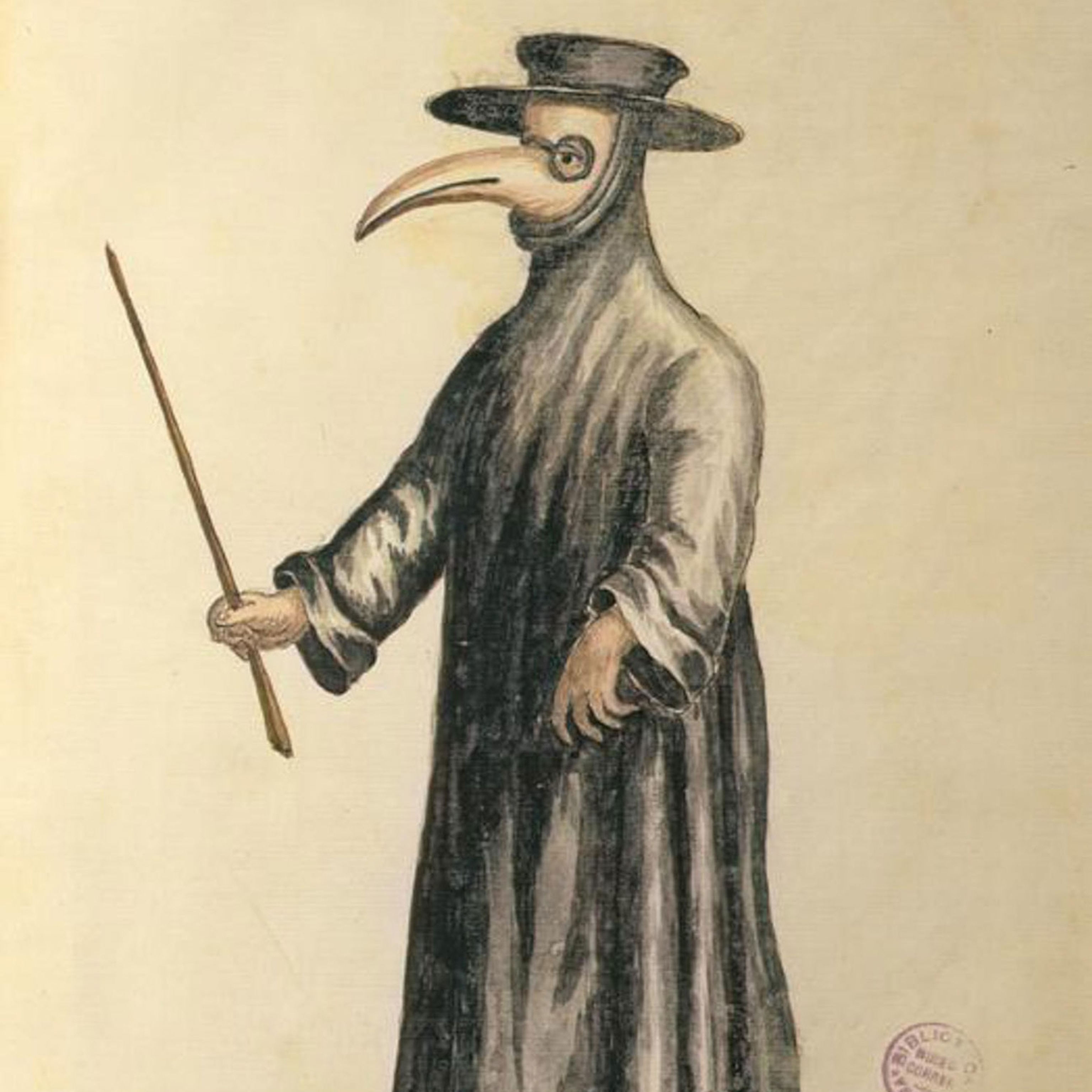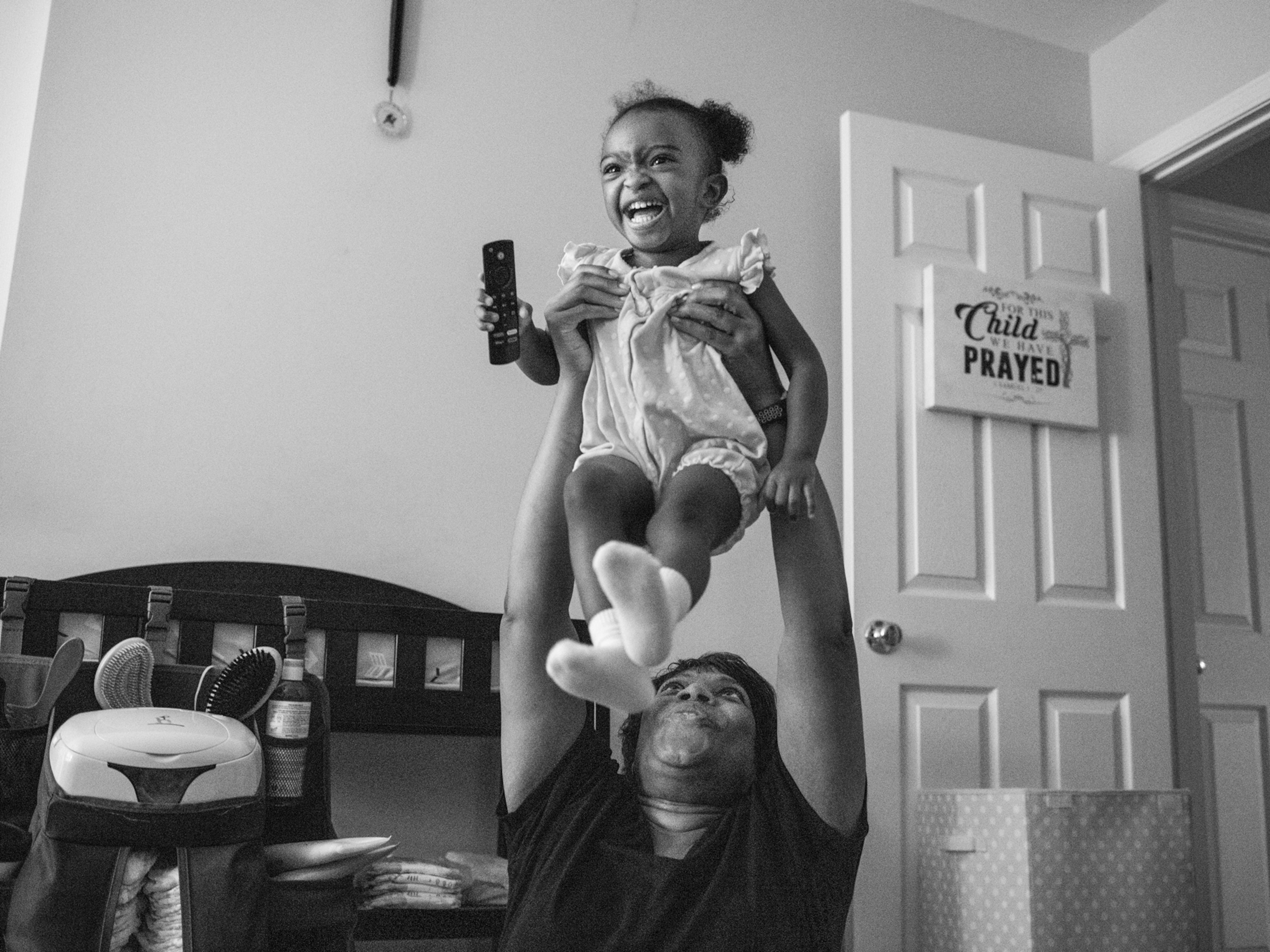
Stress, love, joy—what mothers photographed during the pandemic
More than 27,000 images have been submitted to the Eye Mama project, launched to bring mothers together during the isolation of COVID-19 and beyond.
Like many people, photographer Karni Arieli was stuck at home for most of 2020, living within the narrow confines imposed by the pandemic. To ease the tedium, Arieli—born in Israel and living in England—began taking pictures of her sons. When she realized that many other photographers were also turning their lenses on their families, “I thought, I should collect the stories of motherhood in lockdown.”
In April 2021 she launched the Eye Mama Project, an Instagram platform where she posts images of motherhood made by photographers from all over the world who identify as mothers. Arieli used the word “mama” because she considers it a term of endearment and connection.
“I wanted to come across all different cultures, ethnicities, sexualities—it includes people who have lost a child, have foster or adopted children, children through IVF, single sex parents, divorced parents, all the different variations of mamahood.”
Arieli has received more than 27,000 submissions from some 40 countries since she first invited photographers to share their images. There’ve been surprising challenges: Instagram briefly suspended the account, she suspects for nudity. “Motherhood and breastfeeding are removed a lot,” says Arieli, which makes her want to spotlight them even more.
In the past several months, mothers in Ukraine and Russia have been contributing images. “These women are in a time of need to share their stories,” Arieli says. To elevate their experiences, and their messages for an end to the fighting, she includes the hashtag #mamasforpeace in her posts.
For Mother’s Day, Arieli shared with National Geographic scenes of motherhood that are typically dismissed or invisible: “The tired moms, the dirty tables. The kind of storytelling you feel very intensely when you’re a mom.”
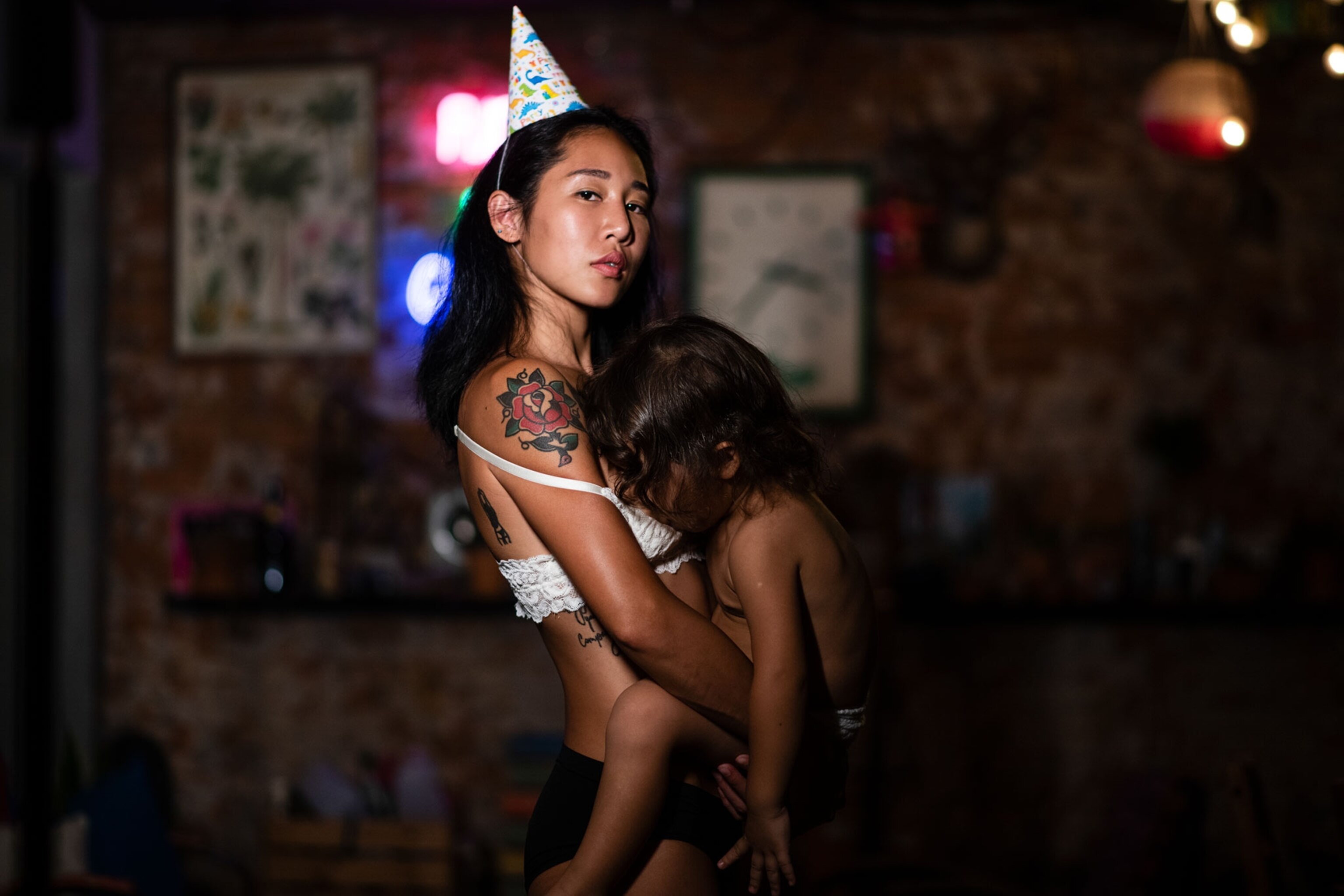
Hanny Hsian nurses her son after a birthday party in May 2021. “A house full of little kids, running around laughing,” she marvels. “Looking back at these pictures, it’s bizarre to see us all without masks and very little fear of COVID.”
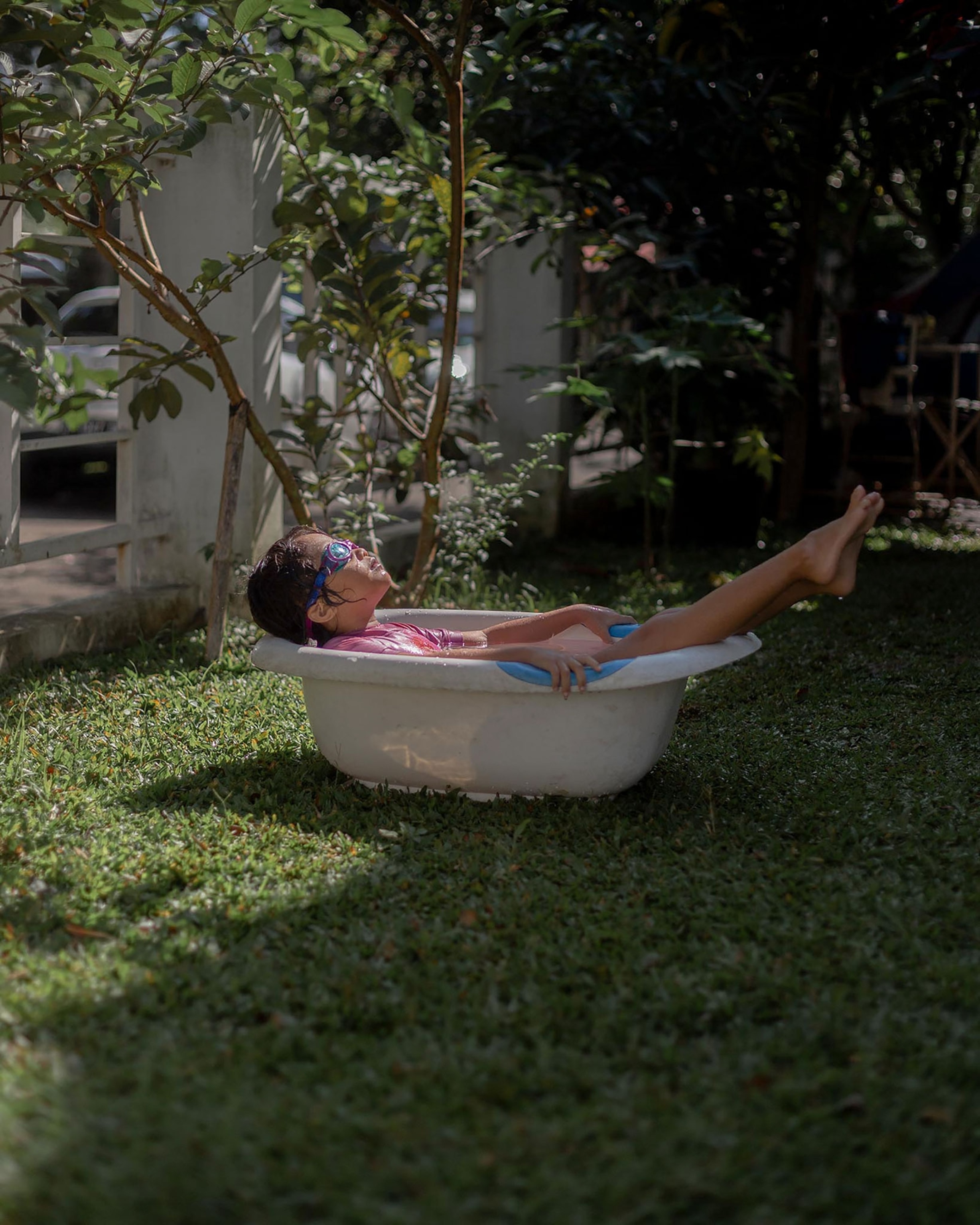
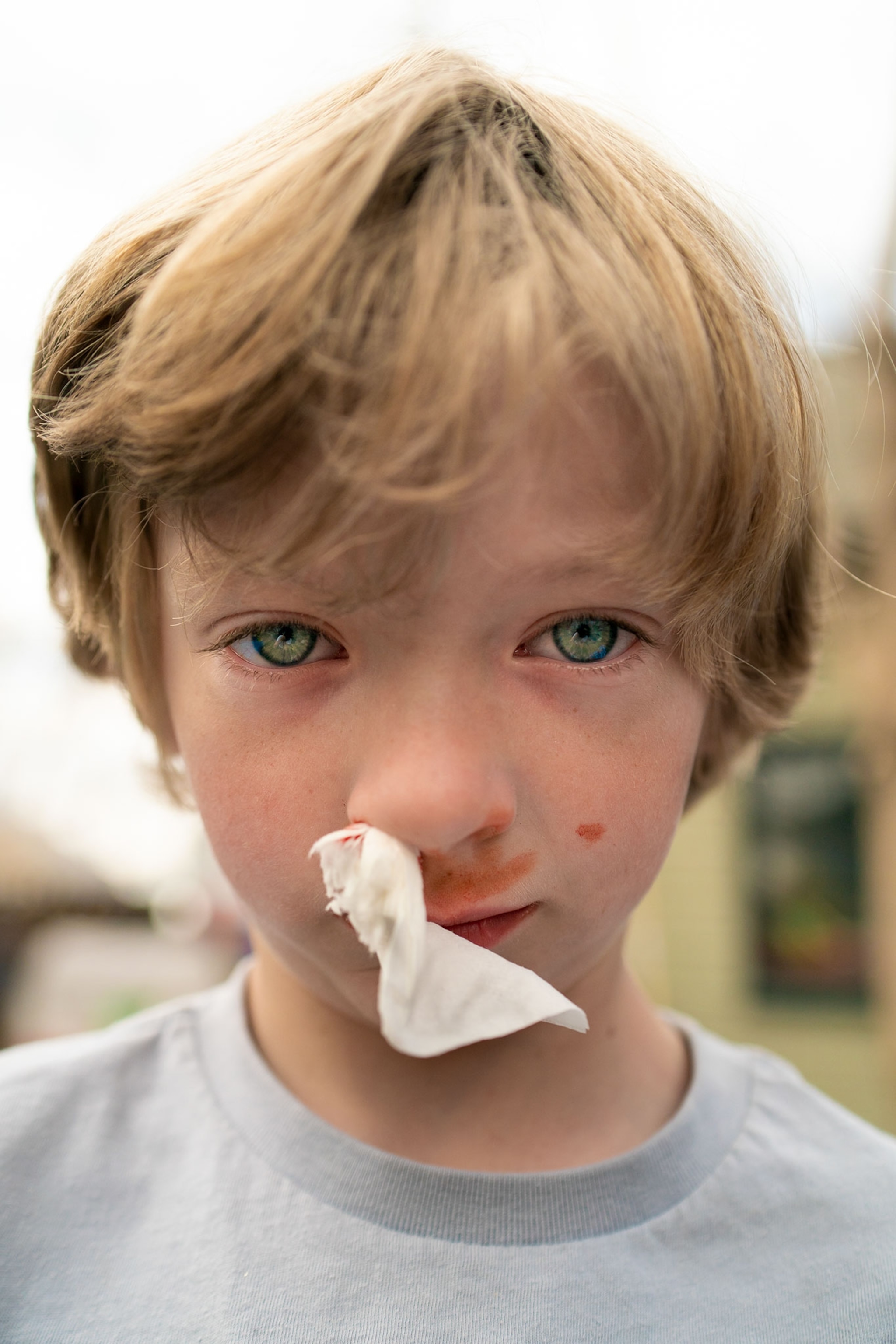
During the pandemic, Atikah Zata Amani worried about her daughter Aluna, “the one very active child who loves to be around other people.” A new routine helped: Here Aluna pretends to attend swimming class in a small tub.
Seven-year-old Cole Caron patiently waits for his nose to stop bleeding so he can go back to playing with his friends in Littleton, Colorado. “He suffers from bloody noses often, seemingly triggered most when he’s experiencing stress or emotional distress,” says his aunt, photographer Kirsten Lewis. “The incidents provide a pause to practice his breathing and talk through his feelings with his family.”
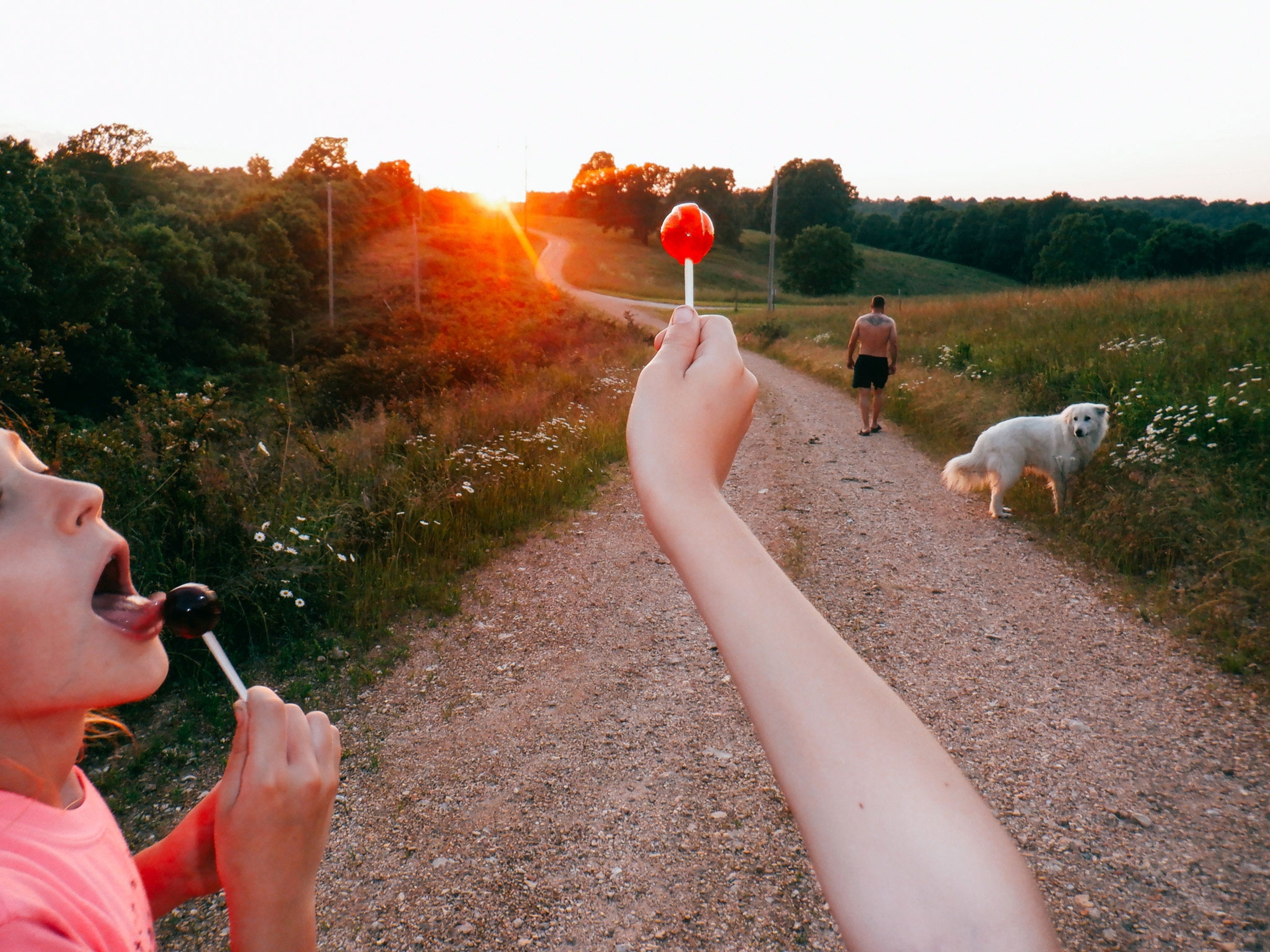
Every evening that they’re home together, Terra Fondriest and her family take a walk down their dirt road near Marshall, Arkansas. On this late spring evening in 2021, “my two kids were enjoying their dessert from dinner,” says Fondriest, “a couple of suckers that our neighbor spoils them with whenever we visit.” She leaves a camera out at home so anyone in the family can take pictures and then makes albums of the results.
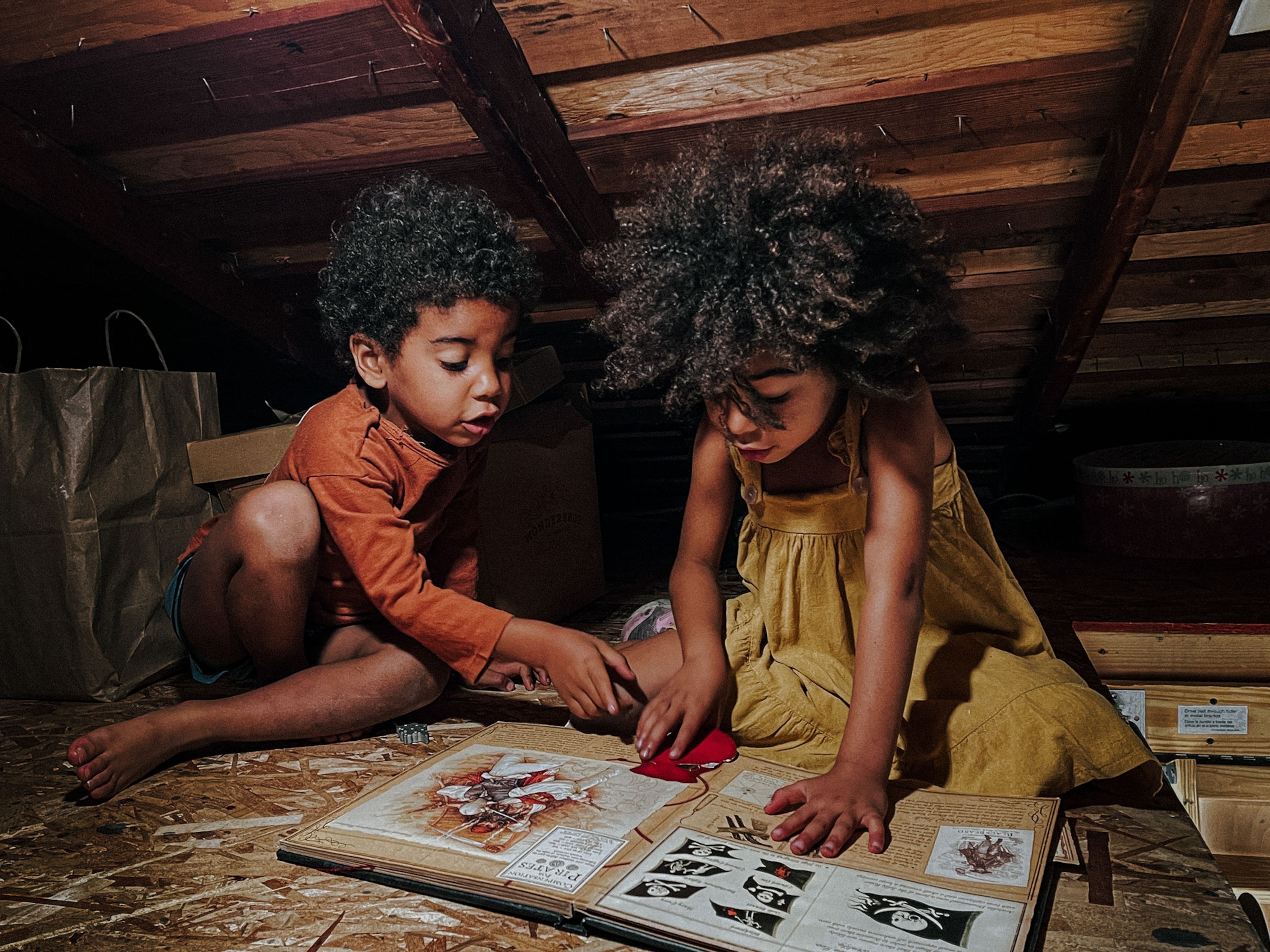
Armenian photographer Arevik Martirosyan discovered her children pretending to be pirates. “They use their favorite pirate book as a map to find treasures,” says Martirosyan, “which are plenty in the attic, from Christmas decorations to old toys.”

German photographer Sarah Pabst nurses her newborn son, Lucio, while her daughter, Elena, lies behind her. Pabst took this photograph in July 2021 in her family’s temporary home near Cologne, Germany. “We had decided to escape the rising Covid-19 curve in our home country of Argentina for our son to be born in Germany,” she says. “Floating somewhere in between feeding, feeling in love, feeling overwhelmed, and new routines, I sit in the sun while time passes by differently in the so-called fourth trimester of postpartum.”
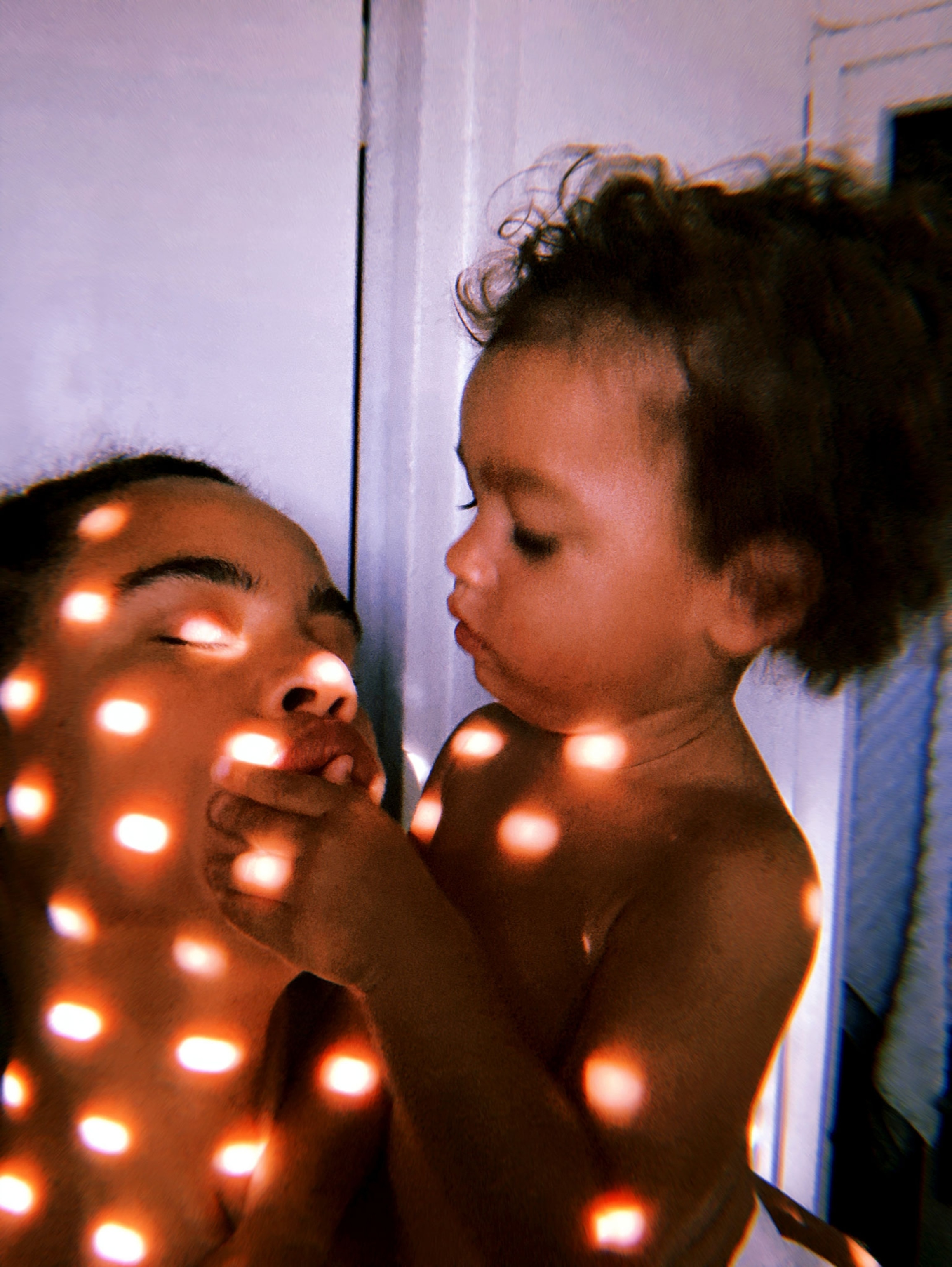
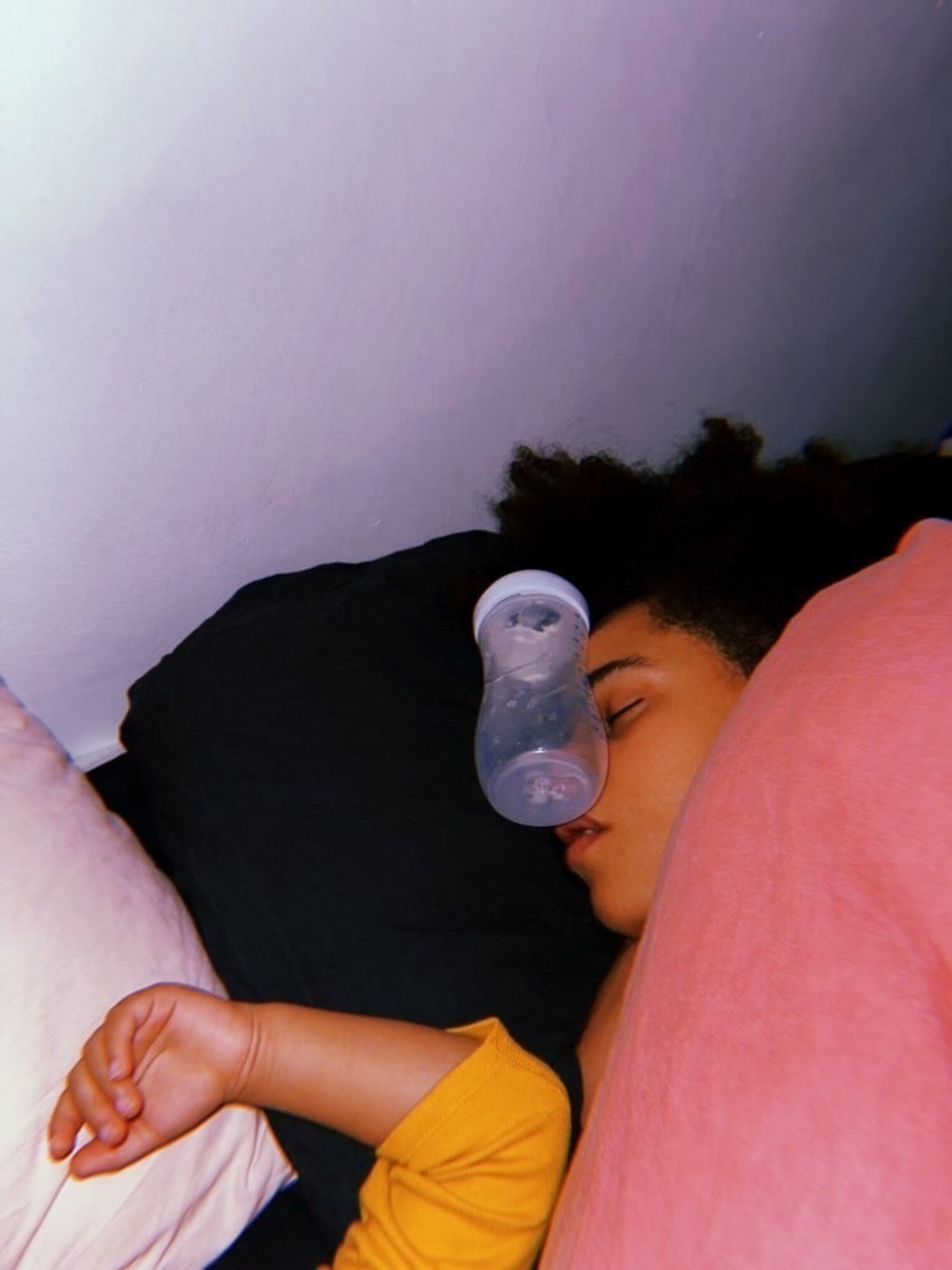
On sunny mornings, the light filtered through the shutters of Charlotte Yonga’s Barcelona apartment, creating “a multitude of luminous spots on the walls” which captivated her baby. When the Cameroonian-French photographer took this self portrait in 2021, “he was playing with the spots of light, sometimes trying to catch them up on my face.”
A year later, Yonga’s partner, Diego Sarramon, captured this picture of her asleep next to the toddler. The scene perfectly summarizes pandemic nights, she says, “when the needs of a young child could inexorably take precedence over everything.”

“I became a mother and my life changed overnight,” says Evgenia Sheiko, a Belarusian photographer living in Israel. She took this series of images from 2018 to 2020, through the first year of the pandemic and from the birth of her first son to her pregnancy with her second.
In the first image, Sheiko sits with her three-day old boy, Ben. “It was important for me to capture that moment,” she says. “In the photo I am a very tired, but calm and self-confident woman.” In the last, Ben is two years old and about to become a big brother.
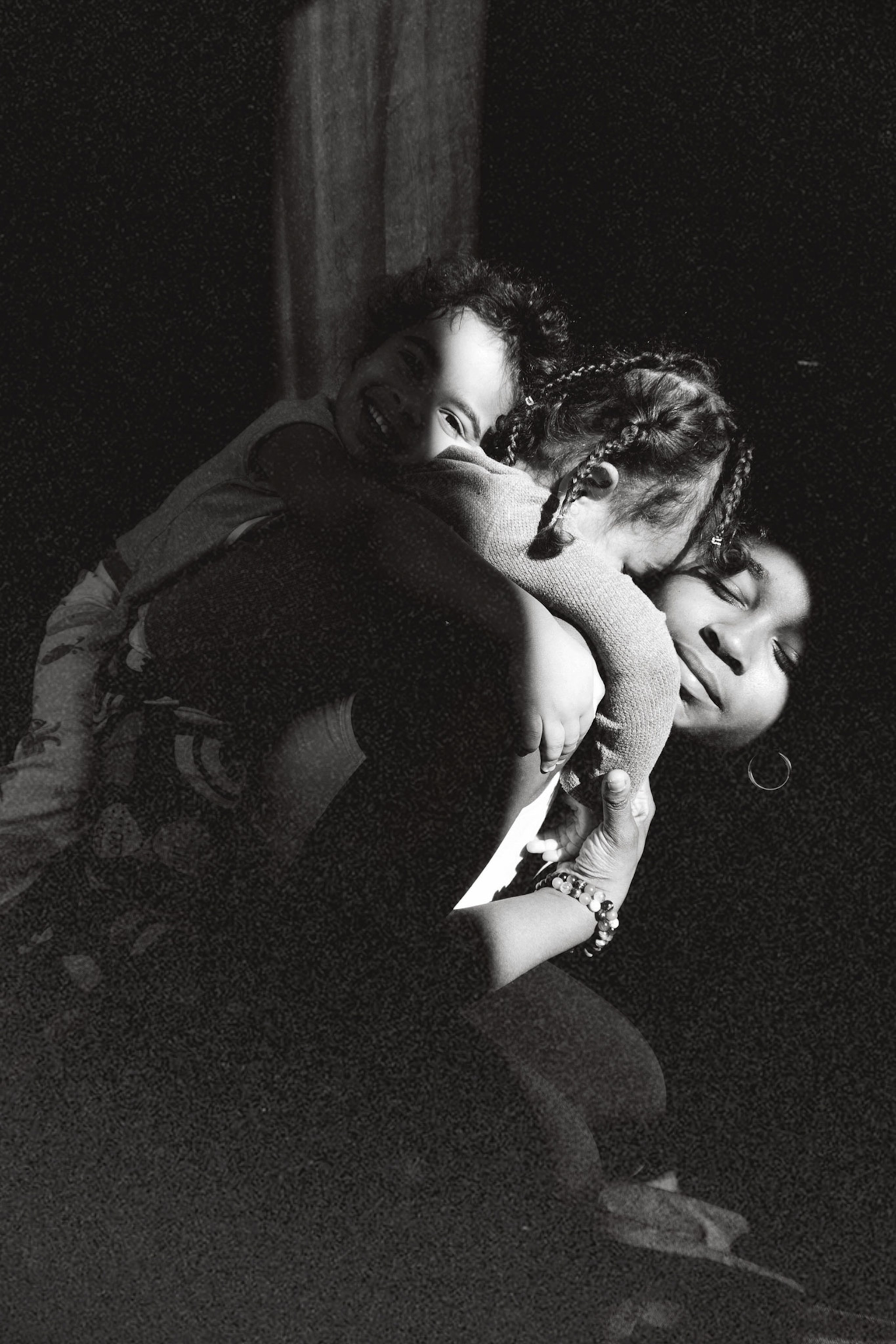
Bri McDaniel was in the process of weaning her two-year-old daughter when she took this self portrait. “Breastfeeding and weaning during the pandemic is not for the faint of heart,” she says. “At that time I realized that we just needed to establish a new way to connect.”
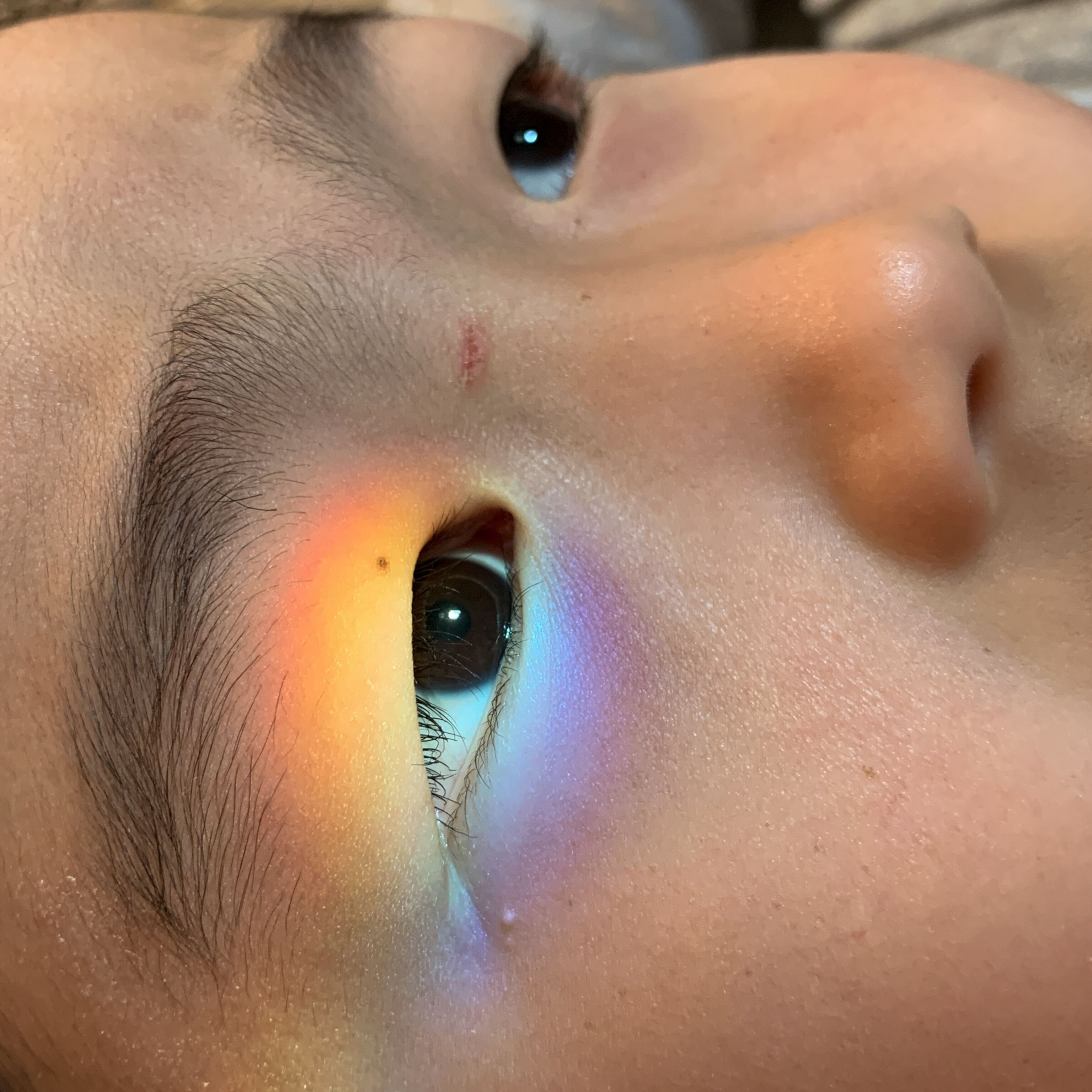
In May 2020, Arin Yoon was quarantined at home with her two children, aged three and five. “We began to anticipate small joys like the time of day when light flooded our house and rainbows appeared in unexpected places.” When her son said to her, “Look mom! A rainbow is on my face!” she snapped this photograph. “It looked half like a bruise and half like a sunrise and it felt like a sign, like hope. It is when I give in to seeing the world through their eyes that I find it easiest to parent. And then sometimes, their magic seeps into my world, when I let go of trying to be in control."
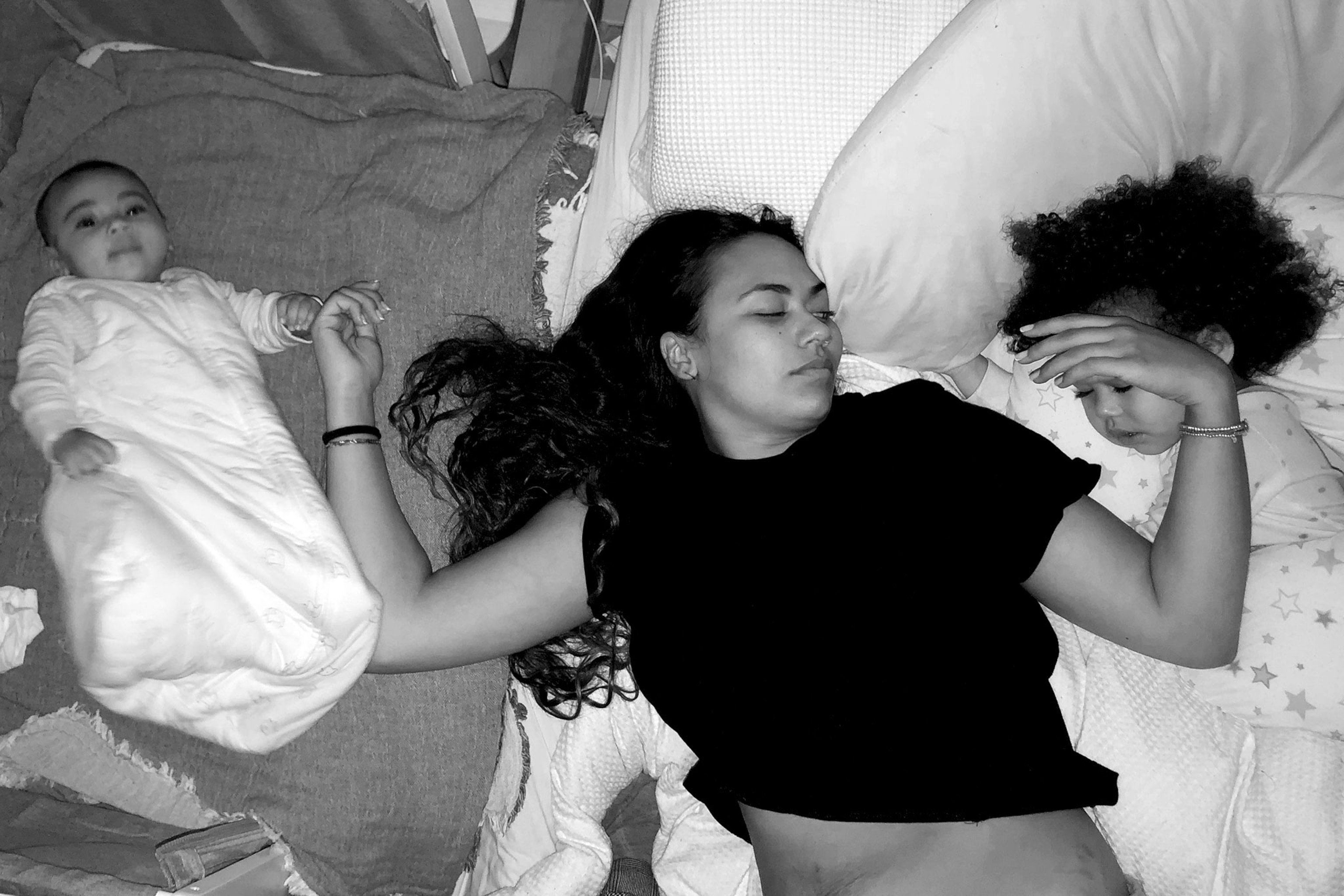
At bedtime one October evening in 2021, Asia Werbel photographed her eldest daughter, Ophelia, with Ophelia’s girls, Nova and Kaya. “I started taking photographs when Ophelia was born in 1997,” says Werbel, whose personal photographic series Mother documents the four generations of women in her family. “As a single parent I found motherhood lonely and repetitive. Through the medium of photography I was free to continue creating—documenting the memories and rituals of motherhood.”
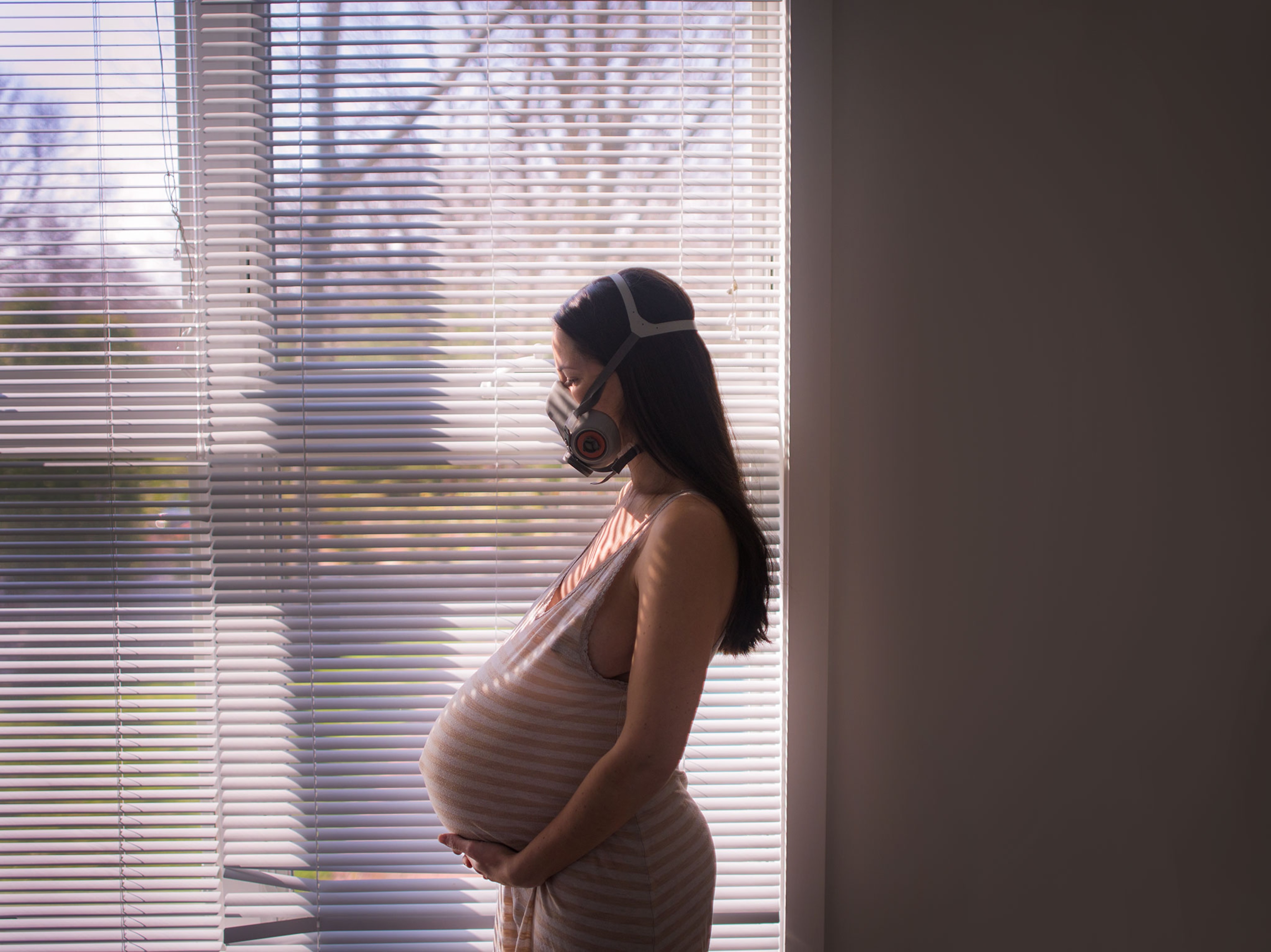
In March 2020, Jamie Diamond was seven-and-a-half months pregnant and due to give birth in New York City, where emergency rooms were buckling under the crush of coronavirus cases. “I was in a state of perpetual fear and my mind was consumed with what-if thoughts and worst-case scenarios as I counted down the days until I had to be in the hospital,” she says. “I started making self-portraits as a way to combat my anxiety.”

Not long after she had adopted her young daughter, Claire Dam suffered a surgical complication and was hospitalized for three months. “To my daughter, it was like she had lost yet another mom,” she says. When Dam returned home, she invited the three-year-old into her recovery process, she says, “so that like my 11-inch incision, we could slowly heal together again.”
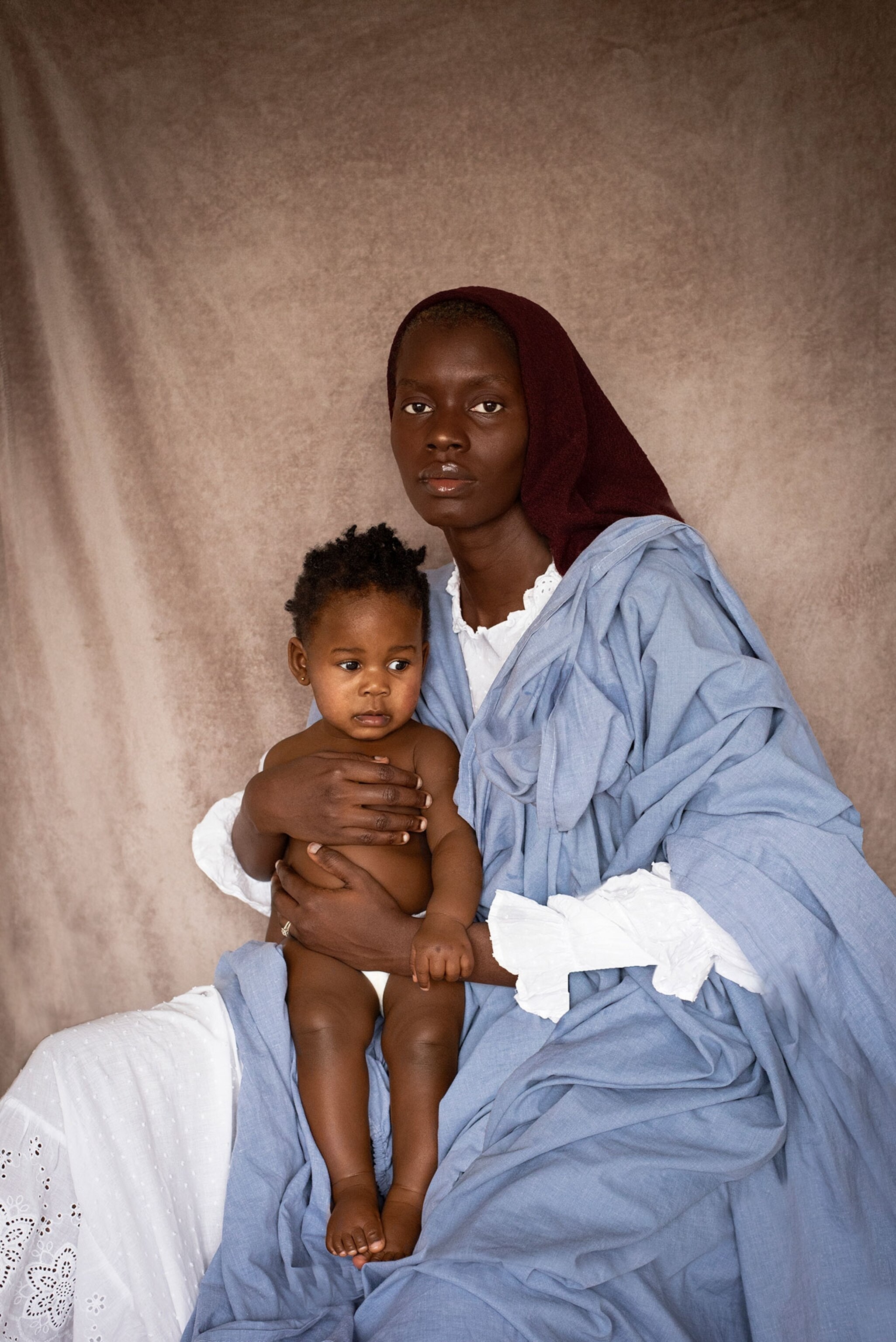
“I made this photograph after my daughter recovered from her first illness,” says Nigerian photographer Dola Posh. “As a new mom, I didn’t know how to help her feel better.” When a friend passed away, “I forgot to mourn because I was lost and learning how to be a mom.” To Posh, this image encompasses the experience of being a mother: “There is tiredness in the eyes, exhausted but finding the balance and being present for your child.”
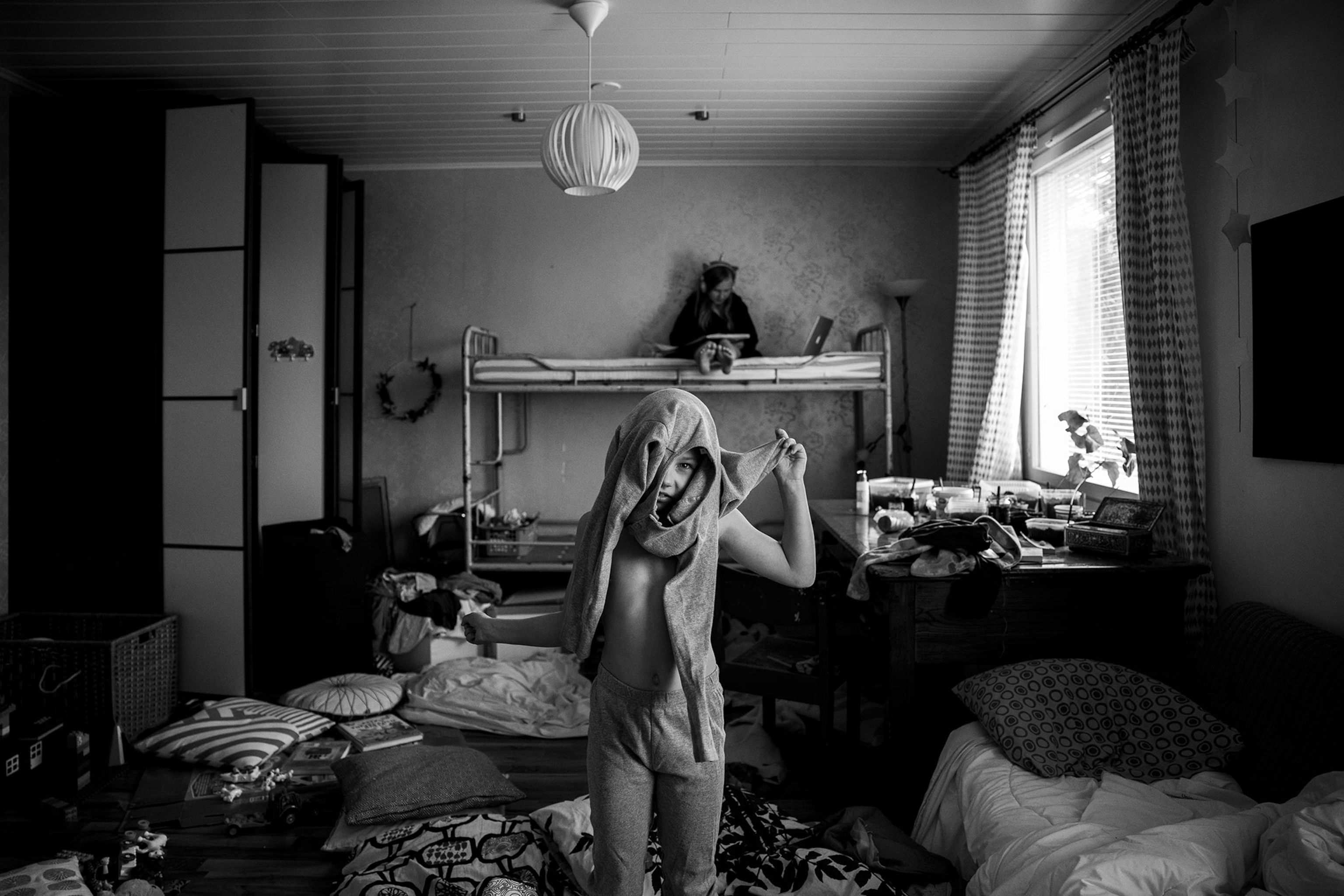
Emmi Minkkinen captured this image of her children when pandemic restrictions left many parents responsible for homeschooling their children. “It’s almost noon,” says Minkkinen. “Isla is dressing in pajamas and Ianna is doing homework in a bathrobe. And why not. We’re not going anywhere today. Or any day soon.”
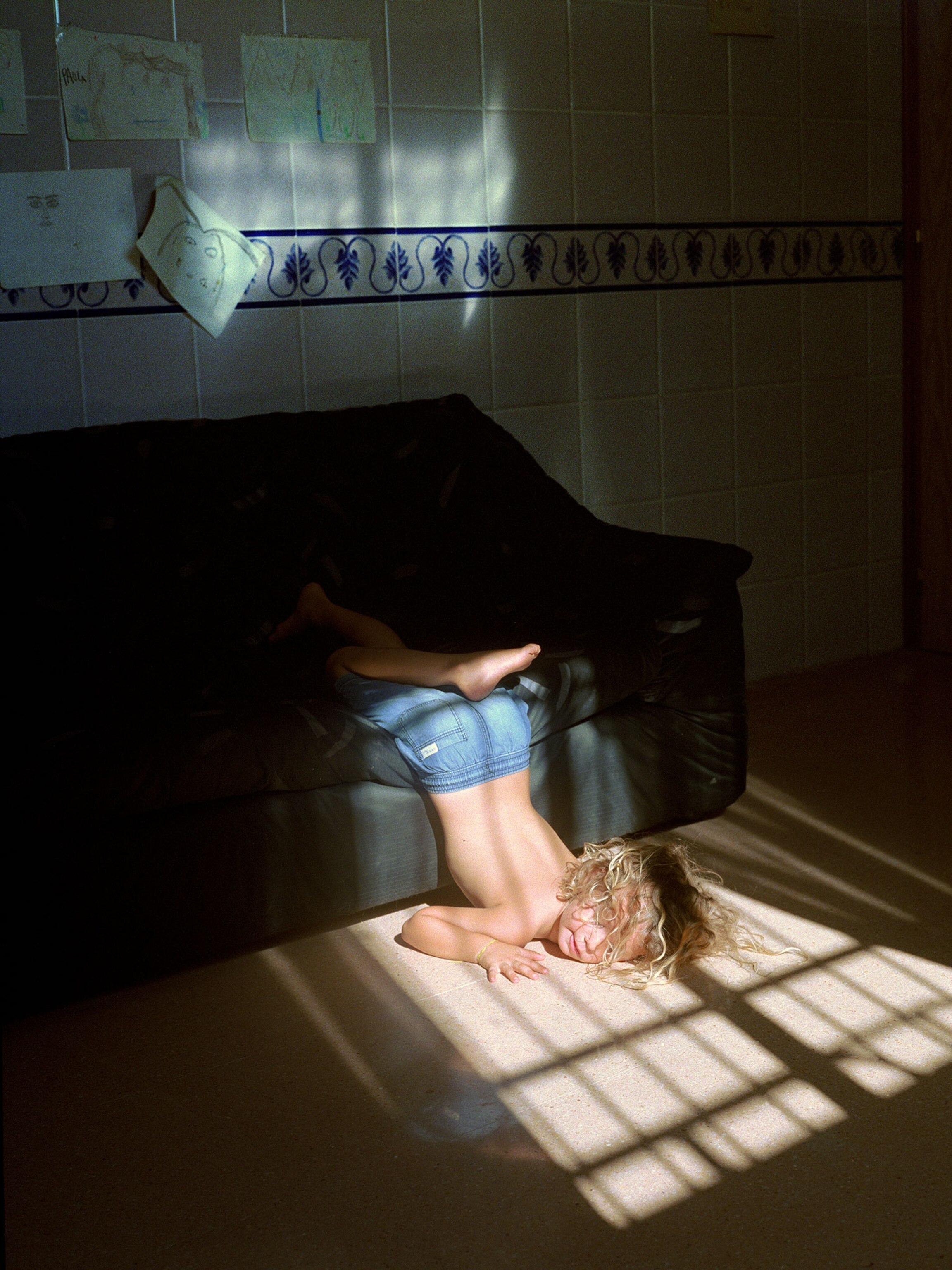
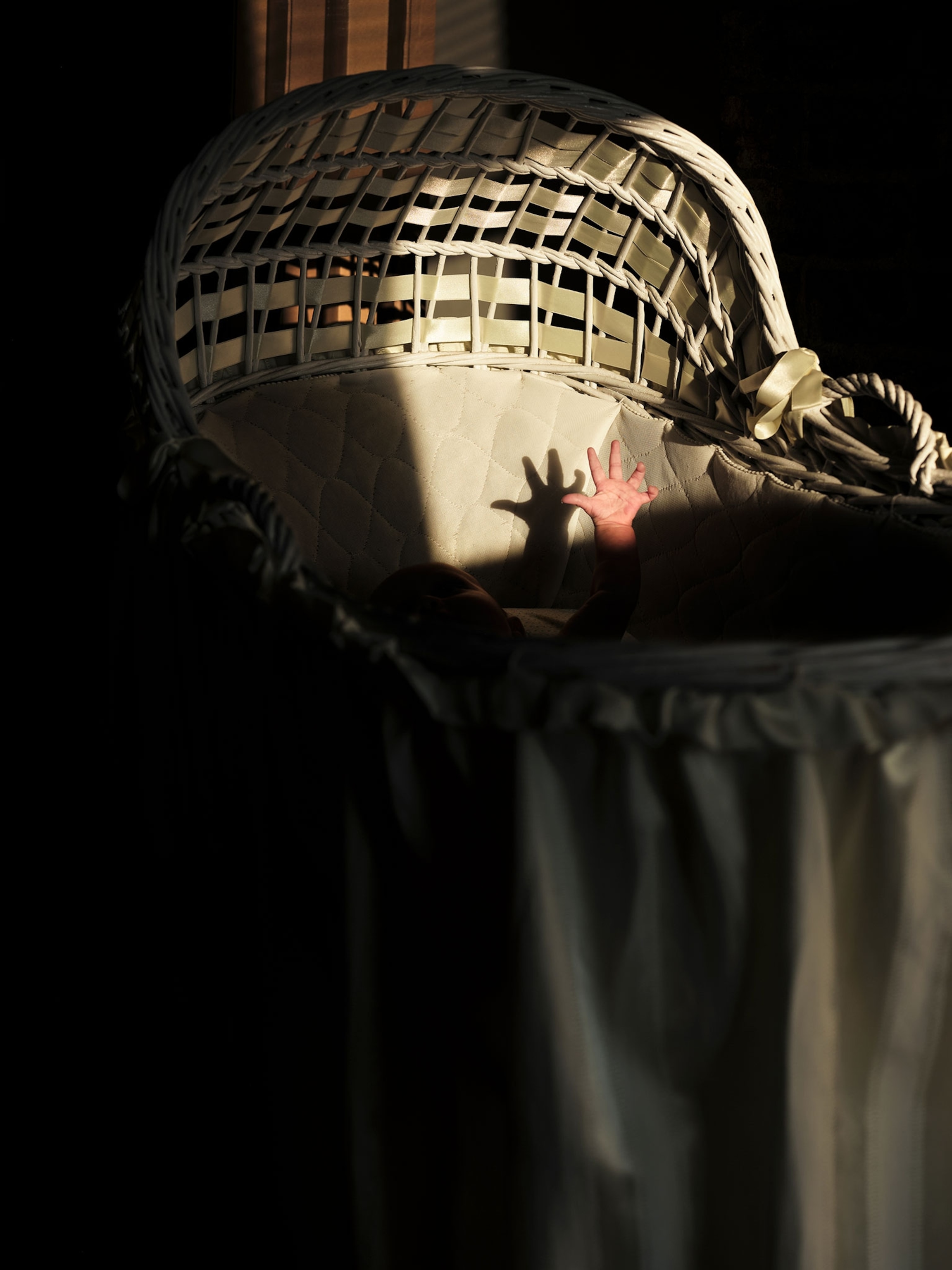
In the early days of the pandemic, Polish photographer Irmina Walczak and her family were traveling through the Spanish countryside in a motorhome. When the country went into lockdown, “we asked our Instagram community to help us to find some place to stay,” says Walczak. “The image is Kajetan, my bored son, on the kitchen floor of a house that was offered to us by a Spanish family for 95 long days.”
When Julie Renée Jones gave birth to her daughter, Imogene, in May 2021, “I was cut off from seeing family and friends,” she says. “I found an outlet for my feelings of isolation and hope by turning my camera towards my new daughter. On one of those first exhausting days with a newborn, I had just nursed Imogene to sleep and turned back to check on her only to see a tiny hand reaching towards the beam of light filtering through the window.”
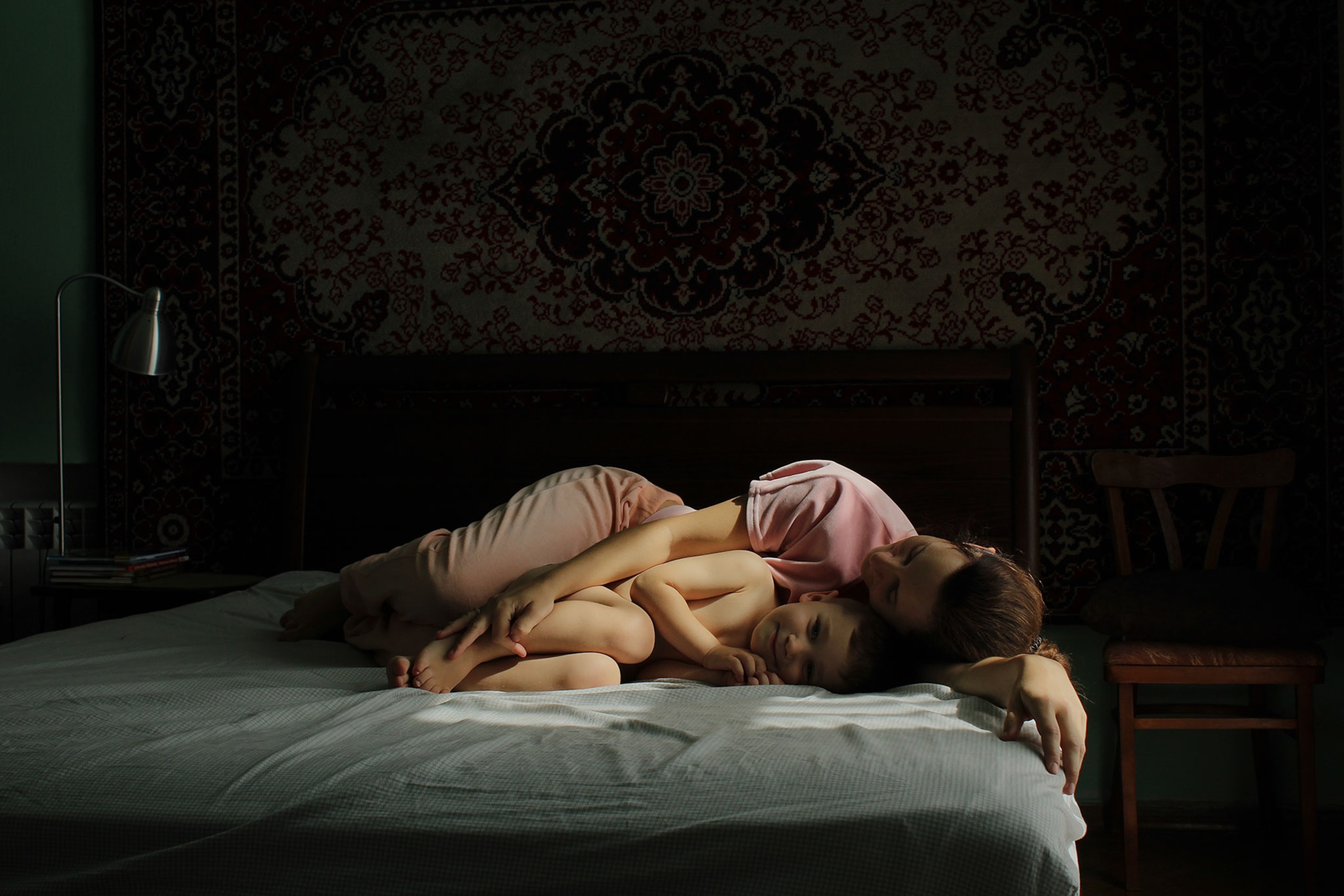
“Tactile sensations (mother's hugs, kisses) have been very important for my son since birth,” says Ukrainian photographer Viktoriia Dudar, who took this photograph on September 10, 2021—before Russia invaded Ukraine. Since the war began, Yaroslav’s need for his mother’s touch has intensified. Every night, “he falls asleep clinging to me, asking me to turn on the night light and keep my palms on his ears,” says Dudar. “He seems afraid to hear the unexpected sounds of war, which are intensified by darkness.”

When Sakiko Matsubara’s daughter came home from kindergarten one day, she kept wearing the mask she was required to wear at school, added 3-D glasses, and started to play.
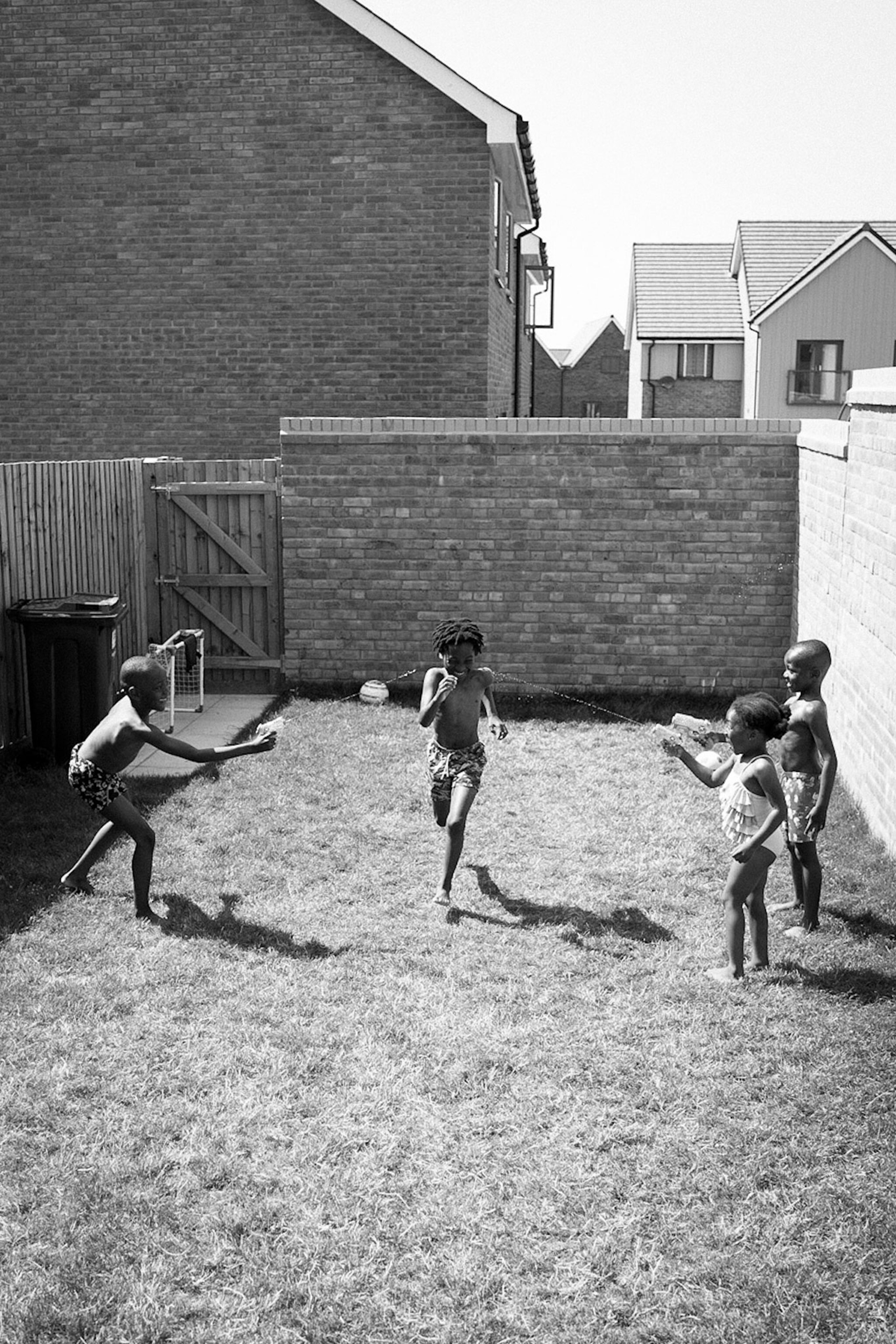
When Nigerian photographer Iko-Ojo Mercy Haruna took this picture of her children and their friends in July 2021, the kids hadn’t all seen each other in a year, she says. “The pure joy of the reunion on this beautifully sunny day was a wonderful sight to behold.”
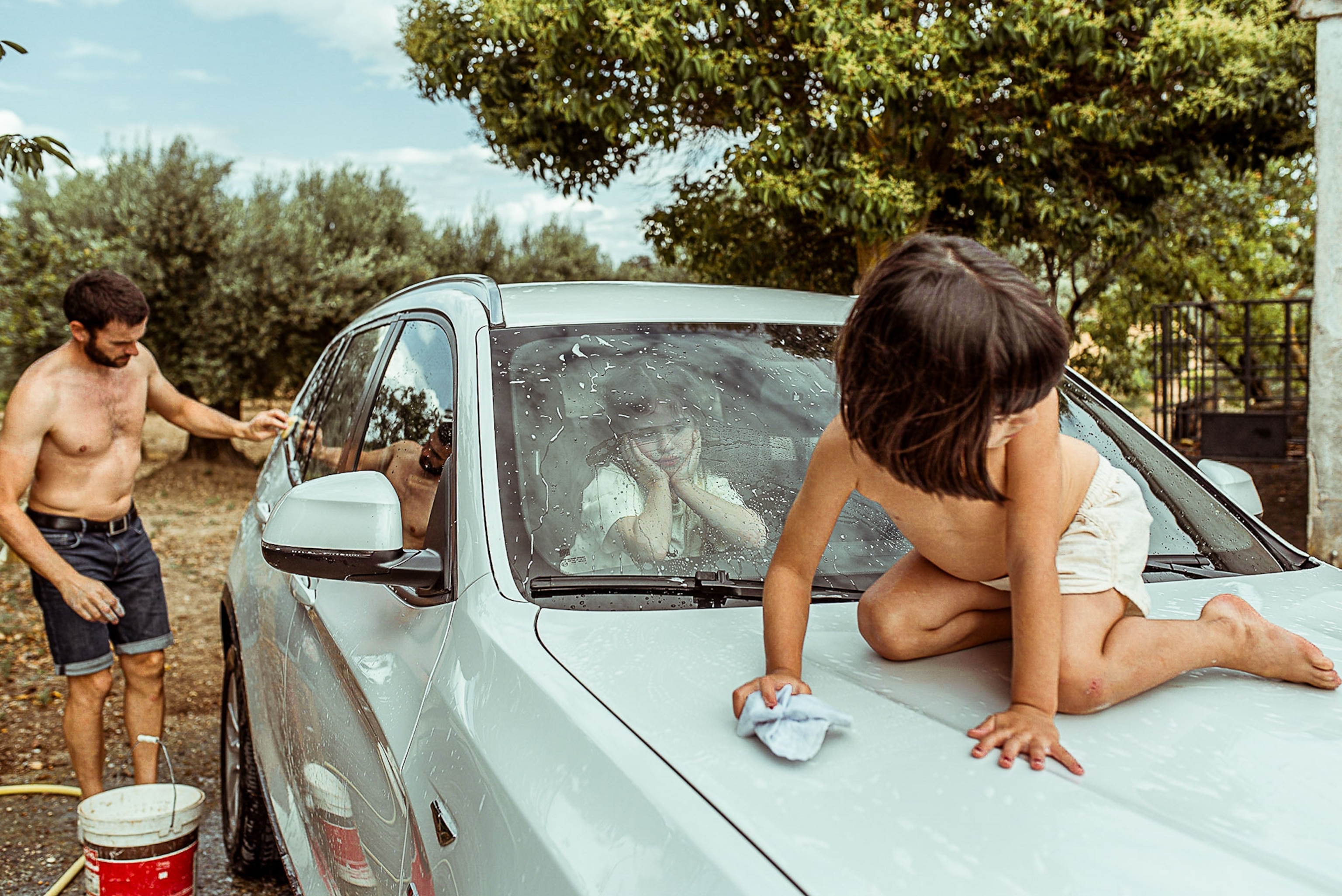
Claudia Cabrero Málaga took this family photo in June 2020, after the country went into lockdown. “My daughters and my husband were cleaning the car, and I saw the photo. It was like a symbol of freedom,” she says. “The title of the photo could be ‘The Worship of the Car’ because after some weeks at home we could take the car and go to the village, see other landscapes and feel free. It was a magic moment for them and for me.”

“My son, Otis, loves to play with my ears. It’s his comfort,” says Aniya Emtage Legnaro, a Canadian-Barbadian photographer. Legnaro and her husband tried for nearly two years to conceive Otis. “After multiple miscarriages, he came,” she says. “One day I will tell him how many little souls cleared the path for him to be here.”
Catherine Zuckerman's work has appeared in National Geographic, the New York Times, and Nature Conservancy Magazine. She has two young children.

